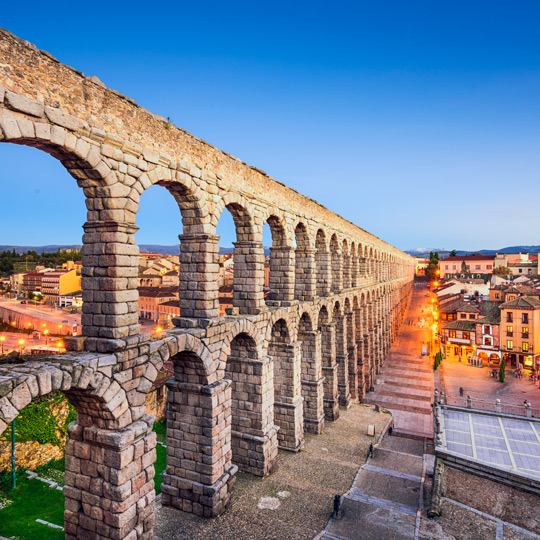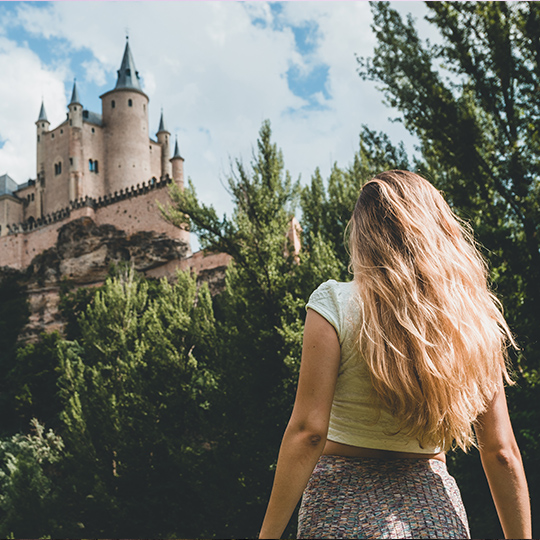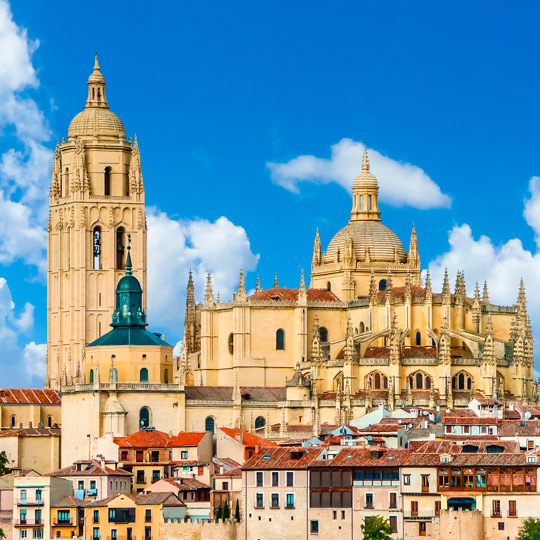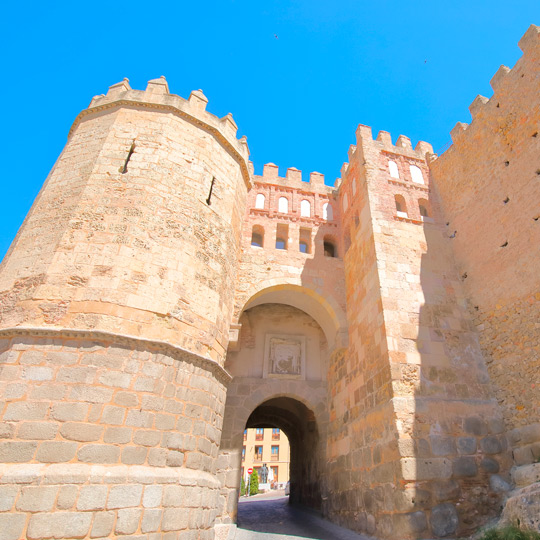The Aqueduct of Segovia, one of the most important legacies of the Roman Empire in Spain
Have you ever seen an aqueduct in the middle of a city? This is a pleasure that awaits you in Segovia. With 167 arches, the Aqueduct of Segovia is considered to be one of the most important legacies of the Roman Empire in Spain. You’ll see for yourself that it was built with solid blocks of stone and no mortar; it runs for over 10 kilometres before it reaches the city, dividing it in two, with the Plaza del Azoguejo on one side, and the Plaza de la Artillería on the other. To appreciate it in all its glory, start out at the Casa de Piedra, continue on to the convent of San Antonio el Real, once the hunting lodge of King Enrique IV, arriving at the Alcázar complex.










